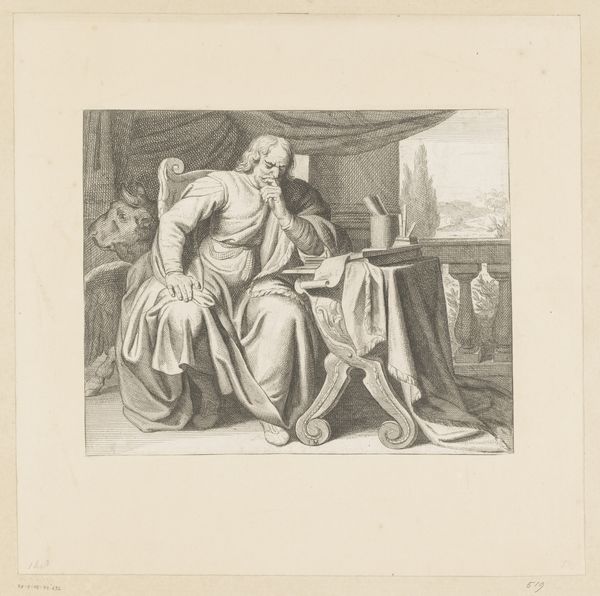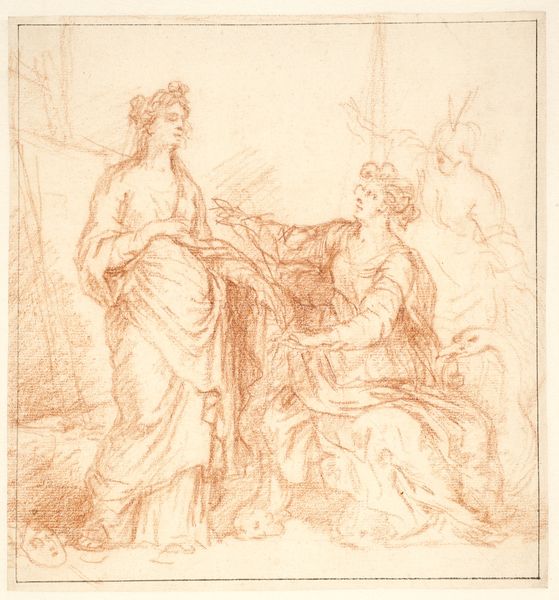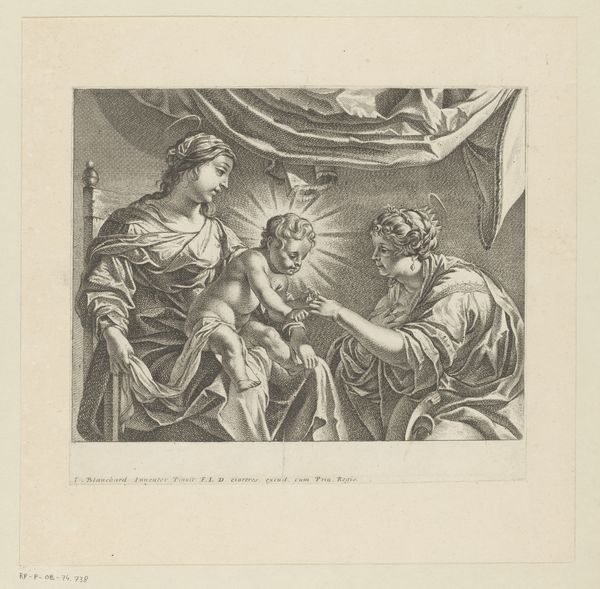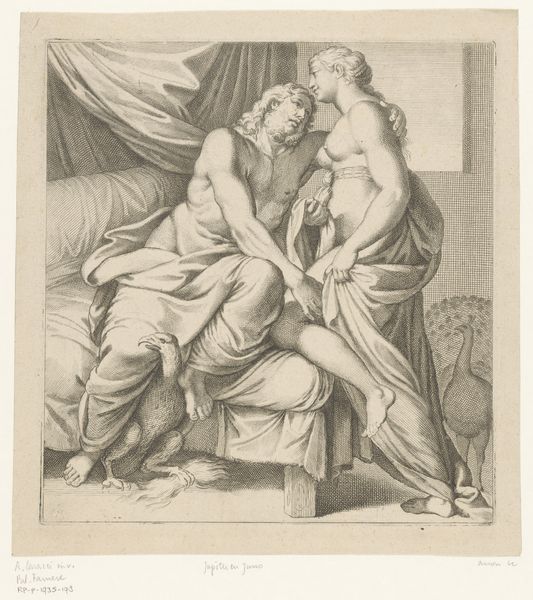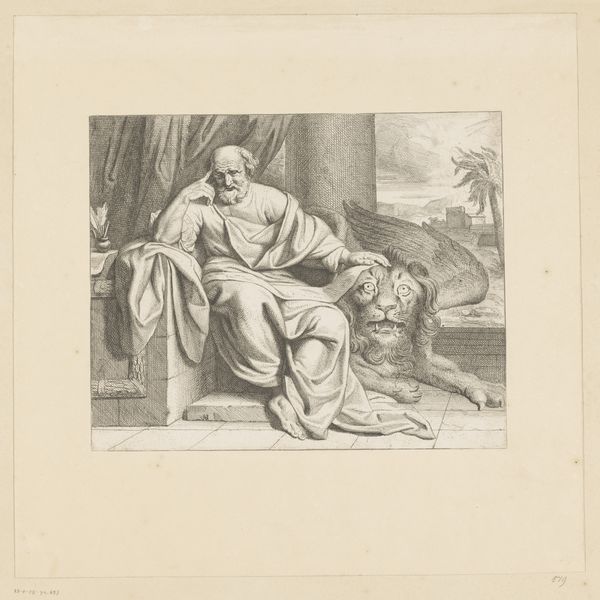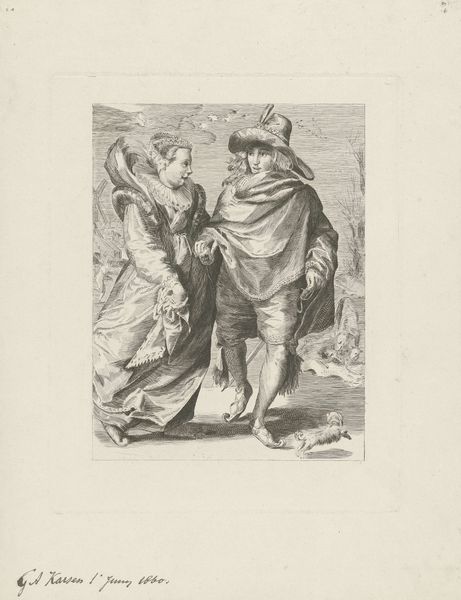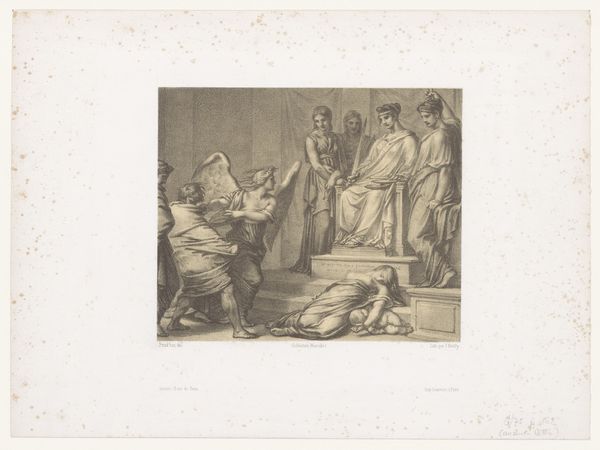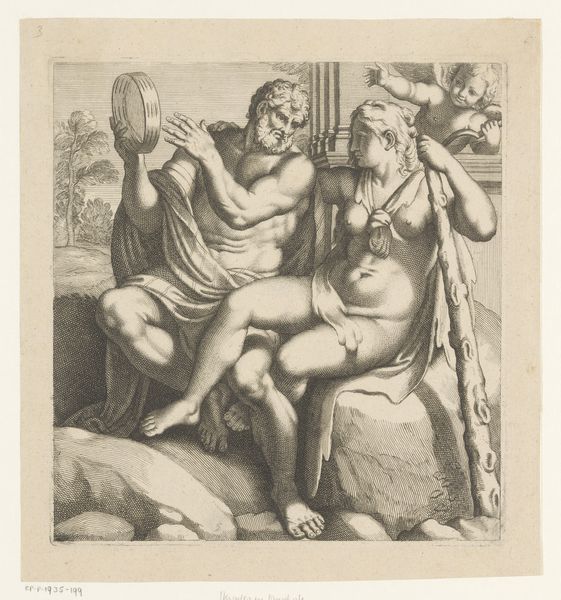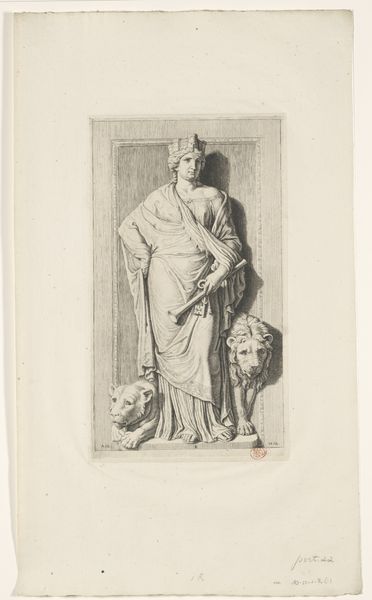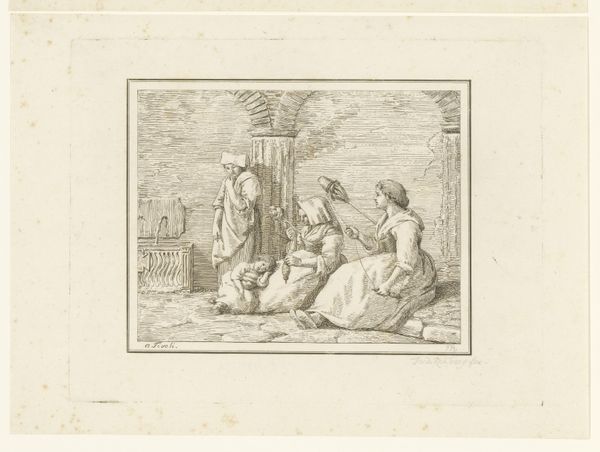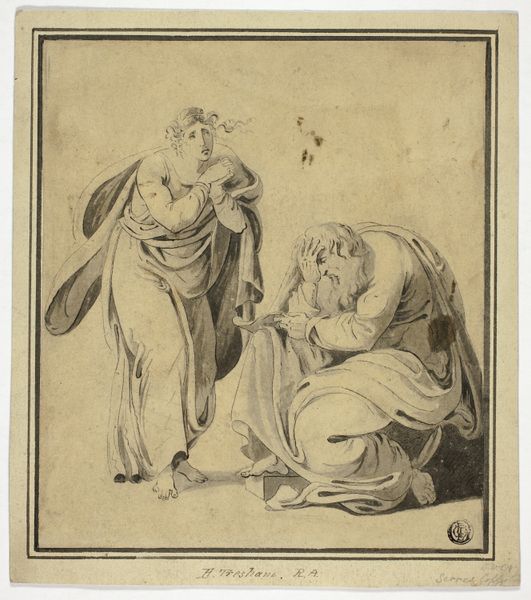
drawing, paper, ink
#
portrait
#
drawing
#
baroque
#
paper
#
ink
#
pencil drawing
#
history-painting
Dimensions: height 192 mm, width 253 mm
Copyright: Rijks Museum: Open Domain
Editor: So, this is Gerard van Honthorst's "Meleager and Atalanta," a drawing from around 1625 to 1655, made with pen and brown ink on paper. It's incredibly delicate. What catches my eye is the stillness—it feels like a captured moment from a play. How do you read the imagery in this piece? Curator: The enduring power of images lies in their ability to compress entire narratives and emotional landscapes into singular, potent forms. Here, the seemingly static scene is brimming with symbolic tension. Meleager, identifiable by his staff and feathered hat, and Atalanta, reclining serenely, are figures pulled from Greek mythology. Their very presence evokes the themes of heroism, love, and tragic destiny. Do you notice anything particular about the inclusion of the dogs in the drawing? Editor: I hadn’t thought about them much. They almost look like spectators. Curator: Exactly! They are not mere pets, they serve as symbols. The dogs might represent loyalty, but in the story of Meleager and Atalanta they could foreshadow the hunt and its violent outcome, a culturally persistent metaphor. Editor: That's fascinating, it makes the drawing seem more complex and layered than I initially thought. How interesting that even in what appears to be a simple drawing, Honthorst embeds so much symbolism. Curator: Precisely! It illustrates how visual symbols act as cultural touchstones, enabling the narrative to resonate across time and place, sparking our own individual memories and connections. Each viewer becomes a participant in the storytelling. Editor: That's a great way to look at it. Thanks for shedding light on the symbolism; it has really enriched my understanding. Curator: My pleasure. It is through this conscious exploration of symbolic imagery that we access the layered, continuing dialogue between the artwork, history, and ourselves.
Comments
No comments
Be the first to comment and join the conversation on the ultimate creative platform.
